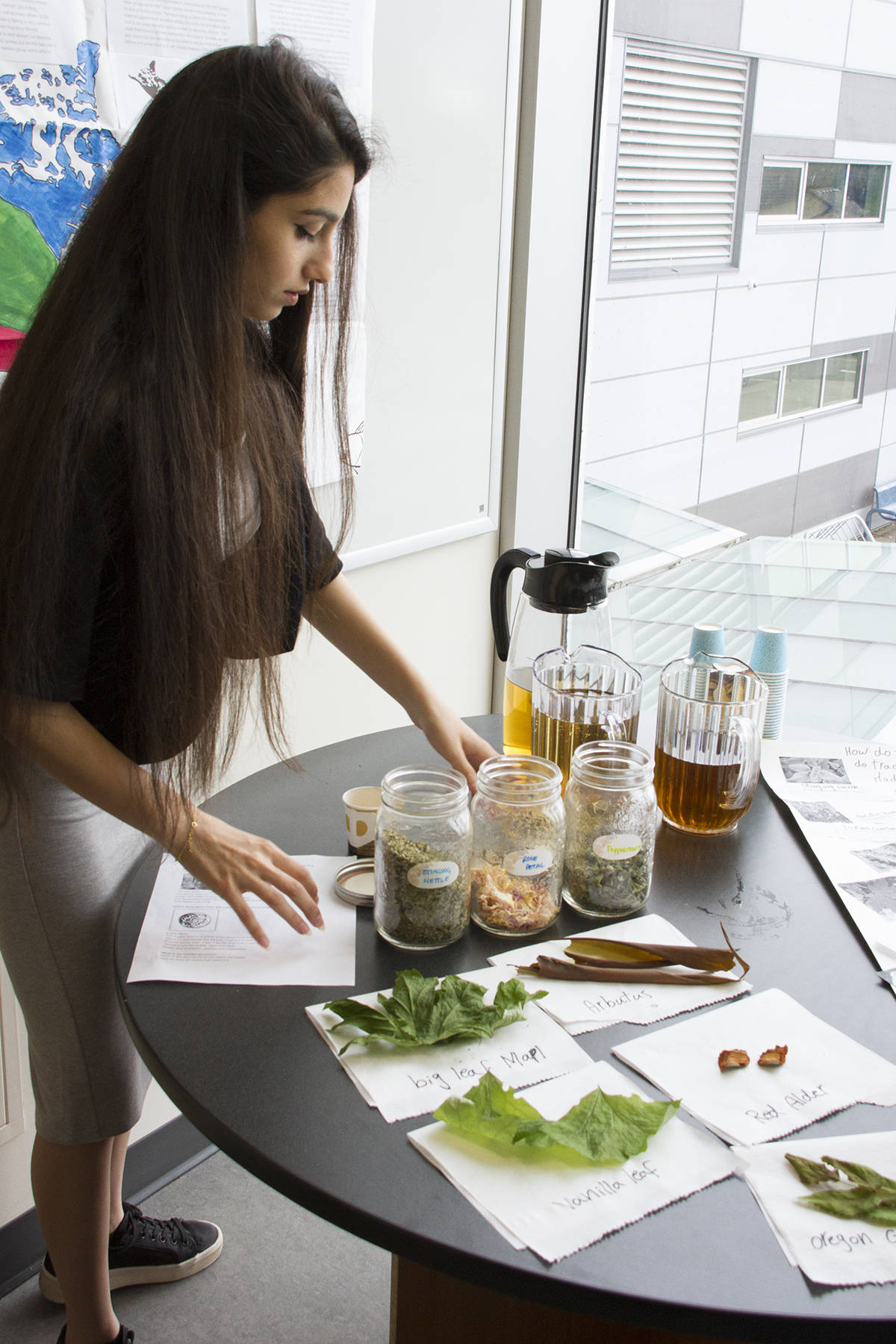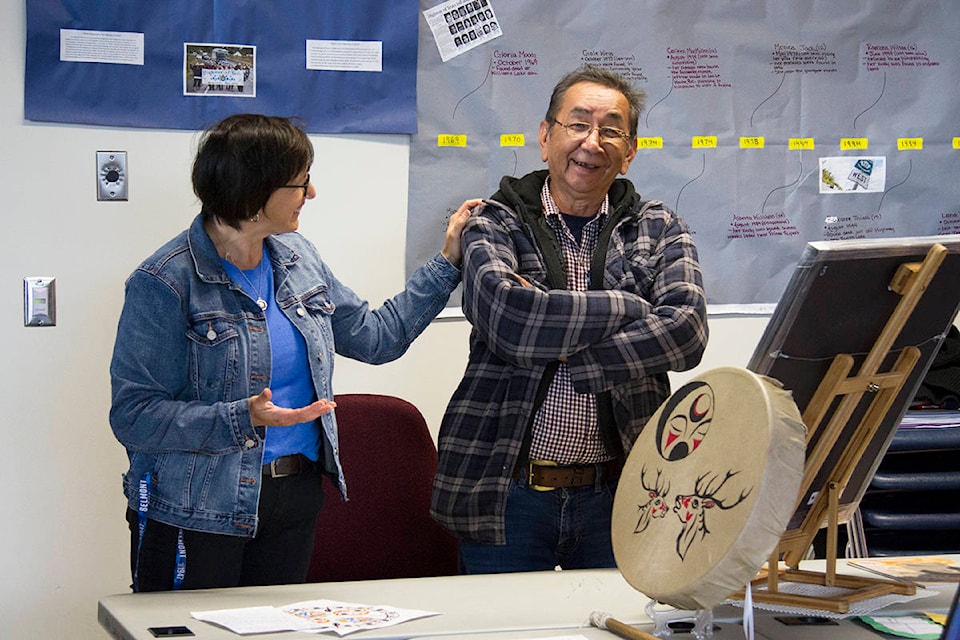A group of Belmont Secondary students had a chance to learn about Indigenous cultures in a different way this month.
Two Grade 11 social studies classes, led by Dayna Christ-Rowling, used pieces of Coast Salish art as inspiration. They then came up with an inquiry question and a project that answered or explored that topic.
“They had a lot of assumptions … that was really a big eye opener for them,” Christ-Rowling said.
The project, as she explained, challenges students to get outside of their comfort zones while still putting a piece of themselves in their work.
The pieces students used as inspiration were on loan from the Salish Weave Collection, which is a large private collection of contemporary Coast Salish art from artists who mostly reside on traditional Coast Salish territories in B.C.
“This is the first time this collection has been used in a high school setting,” Christ-Rowling said, noting the pieces are usually used as visuals for story telling. “It’s an interesting project … You could really look at the art and see anything.”
Some of the topics covered included the Highway of Tears, Aboriginal history, traditional medicinal plants, iconic figures and the growth of the LGBTQ community within Aboriginal communities. Those topics translated into projects that included a rap, homemade tea, baked goods, presentations, diagrams and much more.
“We’re unique, just like the paintings,” explained Razel Henndra as she gestured to the magnitude of different projects around the room.
Henndra’s project examined Canada’s aboriginal history in comparison to Indonesia – her own cultural background.
Her timeline starts with smallpox epidemics and continues to modern political statements. It even includes their service in the first and second World Wars, a subject Henndra found particularly interesting.
“I didn’t know when Aboriginal people went to war they lost their rights when they came back,” she said, referring to those who lost their status upon their return. “I think it’s kind of sad, I don’t think our country is aware of our deep, dark history.”
Elder Henry Chipps was also in attendance to help guide the students and offer insights. “Their projects are quite informative … They’re our future,” he said. “In the past, there was no Aboriginal content, now there’s a lot.”
But as Christ-Rowling added, “it’s not just for the students, the last part is to teach others.”
Like us on Facebook and follow us on Twitter

